Jennifer Crusie's Blog, page 242
January 25, 2016
Snow and Writing/Romance
My computer is developing alarming symptoms (lines, flickering screen, very slow restarts) and I have a lot of snow to shovel, so if I fall silent in the comments, it’s just because I’m digging myself out or on the way to the Genius Bar in a panic. The latest in the Structure series (Escalation and Pacing) is up on the Writing/Romance blog now, and I have a Draft Vault post scheduled for Tuesday and a Questionable scheduled for Wednesday, so at least you’ll be getting posts. Argh.
UPDATE: I shoveled. The dogs are there in the picture for scale . . .


The last one is Milton trying to blaze his own trail.
He failed but is undaunted. I believe he’s tearing apart the trash in the kitchen now. Milton is my role model when it comes to “Never give up, never surrender.” By Grabthar’s Hammer, he will succeed.
The post Snow and Writing/Romance appeared first on Argh Ink.

January 23, 2016
Cherry Saturday 1-23-2016
Today is Pie Day.

Not to be confused with Pi Day, which is March 14 and which, tragically, does not fall on a Saturday this year.

It’s always something.
The post Cherry Saturday 1-23-2016 appeared first on Argh Ink.

January 22, 2016
So I Have A Plan . . .
I’m trying desperately to get organized here. There’s a storm coming in so I won’t be going anywhere until next week anyway, I’m stocked up on bottled water and dog food, and I need to clear out my blog, my work docket, and my cottage. So I’m starting with the blog because I don’t have to get out of bed to do that. I love this plan! I’m excited to be a part of it! Let’s do it!
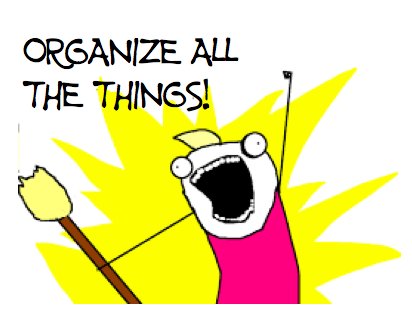
Here’s the plan:
Saturdays are always Cherry Saturdays.
Sundays are Happiness posts over on ReFab.
Mondays are Writing Craft posts over on Writing/Romance; I’ll start posting links here.
Tuesdays from now on will be Draft Vault Days and once the old drafts are gone, I’ll use this day to post any of those “Hey, I had this thought” posts whenever I have one. There may be some long silences on Tuesdays. So basically, Tuesdays are Deep Thoughts Days.
Wednesdays will be Writing Craft Day, clearing out more of the Questionables draft folder and adding in whatever new questions you all come up with, plus whatever Writing Craft posts occur to me. Again, long silences may occur.
Thursdays will be Writing Life days, starting with The Great Office Clean-Up in which once a week I report on progress made in finally getting my office in shape. I am required to post on these Office days even if it’s just a shameful “I did nothing this week” followed by a picture of the dogs.
Fridays will be Book Done Yet? Days in which once a week I report on what I did that week to finish the ONE book I am working on. I am required to post on these days. If I haven’t done anything, I have to post an excerpt from the book for you to poke fun at.
Basically, I’m using Argh to clean out the draft folder, organize my office, and keep me working on whatever book I decide to work on. I’ll let you know what book next Friday, but I’m thinking You Again. It’s all this mystery research I’ve been doing. I’ve already put twins in. Still to go: The Chinaman and the secret passage. Speaking of which, has anybody seen The Abominable Bride? There’s a line in there that made me spit my Diet Coke. A woman is running around shooting people even though she’s lying dead in the morgue, and Watson says, “Maybe she’s twins.” And Sherlock looks at him in complete contempt and says,
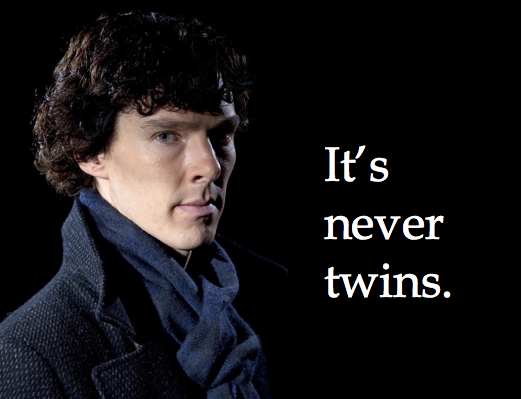
I thought of you all.
(With thanks to Allie Brosh and Hyperbole and a Half for the best manic cartoon ever.)
NOTE: I dropped my laptop and now there are multicolor vertical and horizontal lines on the screen. That can’t be good. If I suddenly disappear for awhile, it’ll be computer problems. ARGH.
The post So I Have A Plan . . . appeared first on Argh Ink.

January 21, 2016
Susan Elizabeth Phillips is a Gloater
Every now and then my Close Personal Friend Susan Elizabeth Phillips sends me a picture of her office, which is always expensively spotless:

You know how she got that picture? She has a freaking balcony in there because her office has cathedral ceilings. So I send her a picture of my office, which has no ceiling because I bought a derelict cottage in the wilds of New Jersey and then tried to move from a 4000 square foot house into 900 square feet of charming shanty:

This is usually where I say something about how creative people can’t work in spotless environments, but clearly something must be done. In my defense, I’ve been dumping anything paper-related in here for months with the idea that I would organize it as I went . . . yeah, that’s not gonna work.
I’m going to have to clean my office. Hell, I’m going to have to paint the floors, build the bookcases, and install the ceiling. Sigh. Never buy a derelict cottage. The work never ends.
I sent the picture to SEP. I haven’t heard back. She probably had a heart attack, but she’ll be okay because her office is completely sterile so they can probably just operate on her right there . . .
Edited to add:
This is Susan’s idea of a REALLY messy office. You’ll notice she needed help to get there. Amateur.

The post Susan Elizabeth Phillips is a Gloater appeared first on Argh Ink.

January 20, 2016
Questionable: Patterned Structure
Briana wrote:
I am fascinated by and want more about patterned structures in story-telling. I don’t have a specific question, though . . . .
To understand patterned structure, you have to forget cause-and-effect, chronological order, and time as indicators of story movement. Patterned structure is an entirely different animal, in many ways female to the overtly male linear structure.
So you have a story in mind, but it’s not about how something happened. It’s about how things layer with each other or bump up against each other, and in so doing take on new meanings because of that juxtaposition. It’s structure built on relationships instead of cause and effect.
So here’s a scene:
It’s about Mary who’s arguing with Harold about the danger of acid rain.
Here’s another scene.
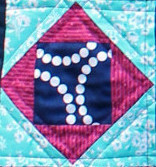
This one’s about Harold telling Marvin that his meteorological research is crap.
Here’s another scene.
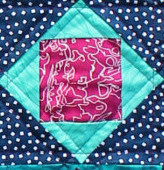
This one is Harold and Mary trapped inside an isolated cabin by a bad snowstorm.
These scenes are all separate. Harold’s argument with Mary does not lead to him yelling at Marvin or getting trapped by a snowstorm with Mary. It doesn’t matter when these scenes happened because there’s no cause and effect. But if you look at them closely, you begin to see relationships. The more scenes you have, the more the relationships emerge:

Just as you see repeated colors, textures, and patterns in the quilt blocks, you see repeated characters (Harold and Mary), repeated subjects (the weather), repeated actions (people at war with each other) in the story. The more blocks/scenes you see, the more relationships emerge: Marvin is Mary’s brother, Mary is Harold’s lover, Harold is Marvin’s boss. When all the pieces are in place, all the scenes are written, the pieces combine into a whole that illuminates what the story is all about. Like this:

The individual pieces aren’t important; it’s the way they combine in the viewer/reader’s perception to make a whole that matters.
Two excellent literary examples are Mary McCarthy’s The Company She Keeps (1942) and Margaret Atwood’s “Rape Fantasies”. Spoilers below.
McCarthy’s novel at first seems to be a collection of six short stories about different men in the 1930’s, but as you read through the pieces you see the pattern: they’re all about the same woman, Margaret, who changes with the different men she’s with, attempting to define herself each time, trying to fit into a world that defines her by the men she’s been with, what her current husband calls her “bad record: a divorce, three broken engagements, a whole series of love affairs abandoned in media res.” (The subtext is clear that the abandonments were media res because the men weren’t ready to abandon them, but Margaret was.) It’s not until the sixth story, this time with Margaret’s psychoanalyst, that the pieces come together. Margaret’s last words are “Preserve me in disunity,” a promise that she won’t fit in, that she’ll be all of the women she’s been and will be, a multiplicity. There’s no other way to tell Margaret’s story effectively except to tell it in pieces because Margaret is in pieces and is determined to stay that way, refusing to be assembled into a pleasing, linear line that men will understand.
Atwood’s “Rape Fantasies” is a pattern of funny scenes that form a poignant whole. It begins with the narrator, Estelle, telling somebody about talking about rape fantasies with three women at work on their lunch hour two days previously. Estelle explains that the other three told rape fantasies that are really sex fantasies and not rape at all, as she points out: “Rape is when they have a knife and you don’t want to.” Then she tells one of her rape fantasies: she’s walking along the street and this guy grabs her arm, and she says, “You’re trying to rape me, aren’t you?” and he nods, so she piles all the stuff in her purse into his hands (he’s polite) until she finds the plastic lemon juice lemon she keeps there, but she can’t get the lid off, so he helps her, and then she squirts him in the eye.
Estelle feels that was kind of mean since he was being so helpful, so she drops the “I was at work” part of her story and goes on telling whoever’s listening about other rape fantasies she has, and they’re all different, pathetic guys, crazy guys, dying guys, but you begin to see the similarities: in every one of her fantasies she escapes by talking her way out, telling them about herself, recommending her dermatologist, establishing relationships. And just when you think this woman is funny but nuts, Atwood hits you with the end that pulls all the different pieces into the patterned whole. Estelle tells her listener that she’s always careful when she goes out for a drink:
“Like here, for instance, the waiters all know me, and if anybody bothers me . . . I don’t know why I’m telling you all this, except that I think it helps you to get to know a person.”
The last thing Estelle says in her story is:
“Like how could a fellow do that to a person he’s just had a long conversation with, once you let them know you’re human, you have a life, too. I don’t see how they could go ahead with it, right? I mean, I know it happens, but I just don’t understand it, that’s the part I really don’t understand.”
And there’s Estelle in brilliant detail, all her fantasies given in conversation with a man she’s talking to in the hope that he’ll ease her lonely life and not rape her because she’s talked to him. You can’t tell Estelle’s story in linear structure because her fantasies aren’t linear, one doesn’t cause the next one, they’re pieces in the puzzle that is lonely, fearful, funny Estelle.
Modern movies have done some great things with patterned structure, Pulp Fiction being the real trail blazer there, but my favorite patterned film is Out of Sight, the story of Jack, an escaped convict who falls for Karen, a federal marshall. Except it’s so much more, so the only way to destroy the deadening effect a linear structure would have on the story is to break the linearity and tell it out of chronological order, juxtaposing scenes so their meaning is in their relationships and not in cause and effect. This approach also led to one of the greatest love scenes ever filmed. Jennifer Lopez’s Karen has traveled from Florida to Detroit to bring in George Clooney’s Jack even though she’s half in love with him and he’s besotted by her. She’s having a drink in her hotel, having fended off some terrible passes from guys in suits at the bar, when Jack sits down across from her and they begin to pretend they’re not cop and criminal, they’re Celeste and Gary, normal people meeting in a bar.
Steven Soderbergh, the movie’s director, could have done what follows in two scenes, the two of them talking in the bar followed by the two of them making love in her hotel room. Instead he fragments both scenes and puts them together in a pattern, illuminating both scenes in a way that chronological linearity could never have accomplished:
Now try to imagine that as two chronological scenes. All of that intensity and emotion would have been lost. In fact, watch Out of Sight in its entirety–it’s a terrific movie–and then go back and imagine the same scenes told in chronological order and you’ll see that the story loses all of its impact and becomes just another cop movie. Because the story is about everything both of these people are colliding at this one time, patterned structure is the most effective way to go.
However, there’s a drawback: Patterned structure is difficult as hell to do well and really only works when the story itself demands it because unless the story depends on the fragmentation, the collection of out-of-sync scenes will just confuse readers and viewers who are trained to understand narrative in chronological order. You have to be a master storyteller to make patterned structure work, one of the many reasons I’ll never do it.
[Quilt is by Cath Hall of Wombat Quilts.]
The post Questionable: Patterned Structure appeared first on Argh Ink.

January 19, 2016
Question About Examples
I’m working on the Writing/Romance stuff, and I just added an example using Maybe This Time. So you know, a book. But I always feel that using a movie is better because more people will have seen a popular movie than will have read almost any popular book. The only things movies can’t illustrate as well as books are things like point of view and internal monologue. But people get annoyed if I don’t use books because they’re writing books, not movies.
So help. Is using books as an example better than movies? Are movie examples just as helpful?
The post Question About Examples appeared first on Argh Ink.

January 18, 2016
Galavant Post Script
Okay, Sid doing Les Mis was wonderful, Sid is always wonderful, but Gareth and Madelena in the Red Candle District?
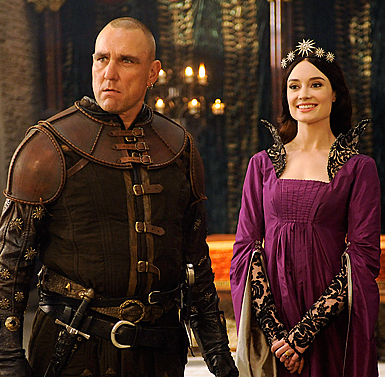
My new favorite couple of all time.
The Galavant writers are GENIUS. I’m a romance writer and I did not see that one coming, but they’re perfect together. They’ll screw it up, of course, but please, please, please let these two crazy, homicidal whack jobs end up together.
Best line:
Madalena gives Gareth a crystal nut bowl for his birthday.
Gareth: “They’ll never fit.”
Second best:
Richard naming his bearded dragon “Tad Cooper.” Because why?
The post Galavant Post Script appeared first on Argh Ink.

January 17, 2016
PopD is Done . . .
Remember Popcorn Dialogues? The site where Lani and I dissected romantic comedies in podcasts for months?

We’d left it on hiatus, but yesterday Mollie said, “Look, you’ve had a ‘we’ll be right back’ post on there since 2012, do something about that.” Lani said, “If we ever do another podcast together, it should be something new. PopD was a very specific time and place. I think it’s best to end it.” And I think she’s right. So she’s put up a beautiful final post and that’s done. The site will stay up because there’s good stuff on there, but there won’t be any more Pop D posts.
Nothing but good times ahead.
The post PopD is Done . . . appeared first on Argh Ink.

January 16, 2016
Cherry Saturday: The Feel Better Galavant Edition
So far, 2016 has been awful. In honor of that, here’s the Cherry Saturday Feel Better Galavant Edition because not everything in the world sucks, especially a world that has a musical comedy fairy tale satire . . . you know, you just have to watch it.
Not convinced? It has Timothy Omundson, Joshua Sasse, and Kiley Minogue doing this:
Fun fact: Sasse and Minogue met doing this scene and began dating after that. Well, how could they not?
Seriously, if you haven’t seen Galavant yet, go start with the first series (the entire first season is four hours long) and then come back for the second (currently airing two half hour episodes every Sunday at 8 on ABC,and yes I’m astounded that ABC is doing something this whacked-out, too). It has silliness, great performances, meta, amazing voices, insubordination, beautiful sets and costumes, and silliness. It’s Monty Python meets The Princess Bride and they have a three-way with Spamalot.
Here’s the beginning of the first episode of the first season, just to get you started. Warning: It’s the Earworm from Hell:
Needless to say, things don’t go as planned for either Galavant or King Richard. Omundson had a great time being a villain in season one, complete with Vinnie Jones as his henchman (I’ll watch anything with Vinnie Jones. Or Omundson, for that matter.)
And then there’s Galavant the Hero:
You know, it’s not easy to be that good looking with that great a voice and still play comedy as well as Sasse does. Add in that all the supporting characters (Sid, Gareth, Isabella, Chef and Gwen) are terrific in great subplots, and the guest list is nothing short of inspired (Weird Al, Hugh Bonneville, Jon Stamos, Ricky Gervais, Simon Callow, Rutger Hauer, and of course, Minogue, among many others) and Galavant is a tour de force.
Season Two is, in my estimation, even better.
Massive spoilers from now on, so if you haven’t seen Season One, skip down to the bold face at the bottom:
That’s Hugh Bonneville as the Pirate King. Downton Abbey must be in shock. And awe.
The biggest surprise for me in all of this is how layered the characterizations are, and how the storybook relationships twist and turn. The depth they’ve given to Richard, for example, possibly the dumbest king in legend, is touching and due in no small part to Omundson again. And in “Bewitched, Bothered, and Belittled,” there’s a wonderful moment between Madalena and Gareth (the bitchy queen and the henchman) involving severed body parts that was really touching. No, seriously, it was one of the sweetest moments I’ve seen onscreen in a long time. Well, it’s always heart-warming when a Big Lug does something perfect for a distressed partner.
Another surprise: Galavant and Richard teaming up as travel buddies, much to Richard’s joy and Galavant’s exasperation. That exasperation leads to Galavant trying to fix Richard up with Bobby (Roberta) in a great BFF song:
Best line: “Trust me, I promise, she knows.”
And then there are moments like Isabella’s mother talking about Galavant before telling Isabella to give up on him and marry her eleven-year-old cousin: ““He’s a tall drink of water, and I will forever keep him in my spank bank, but . . .”
Yeah, I LOVE THIS SHOW. Seriously. Hmmm. Maybe we should do Galavant Sundays. They’re doing some really interesting things, and when they miss, they miss big, which is also interesting.
• In other oh-good show biz news, Neil Patrick Harris will be playing Uncle Olaf in the Netflix version of A Series of Unfortunate Events.
See? Nothing but good times ahead. (Death, fuck off for the rest of 2016. Thank you.)
The post Cherry Saturday: The Feel Better Galavant Edition appeared first on Argh Ink.





